
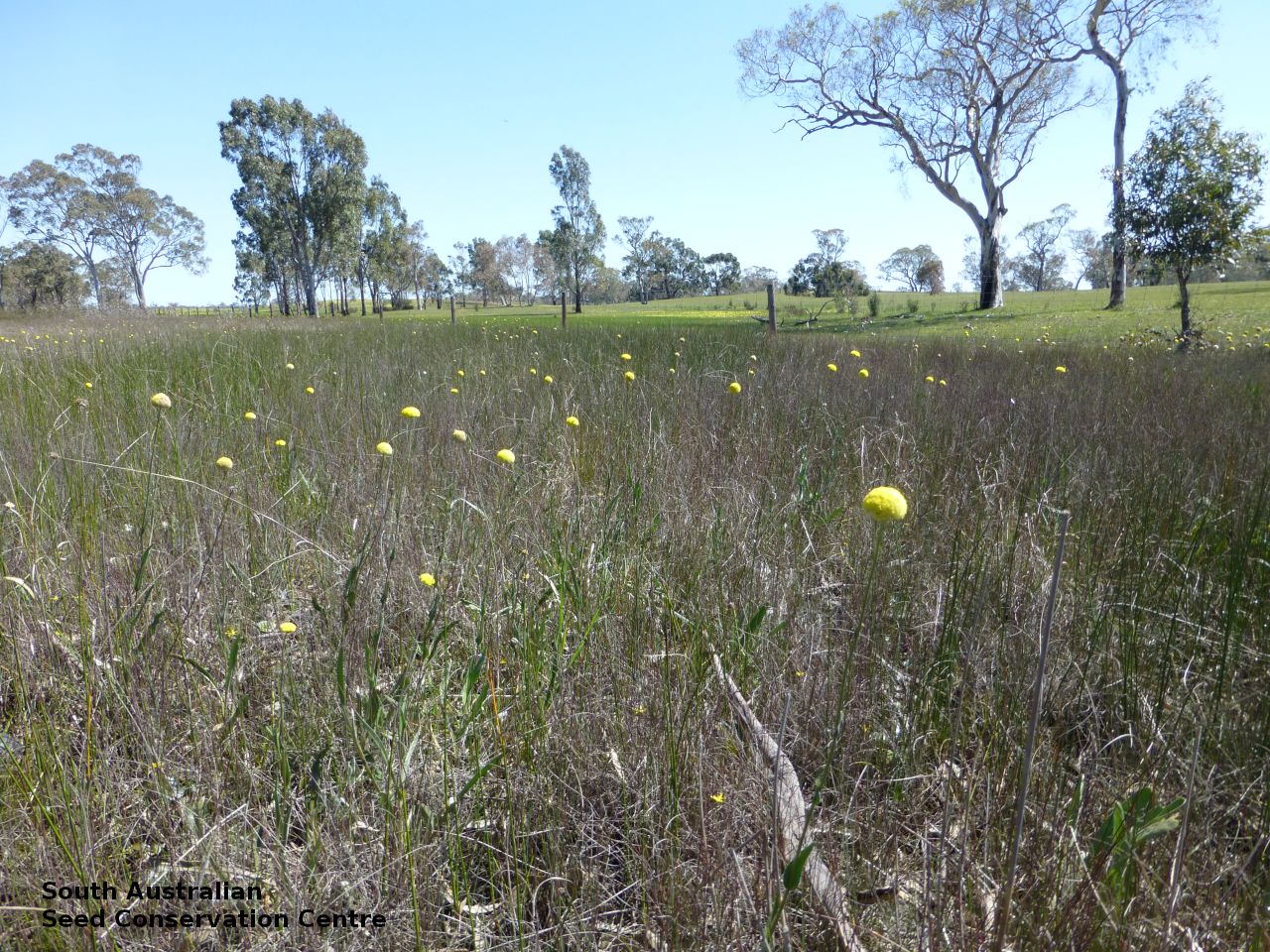
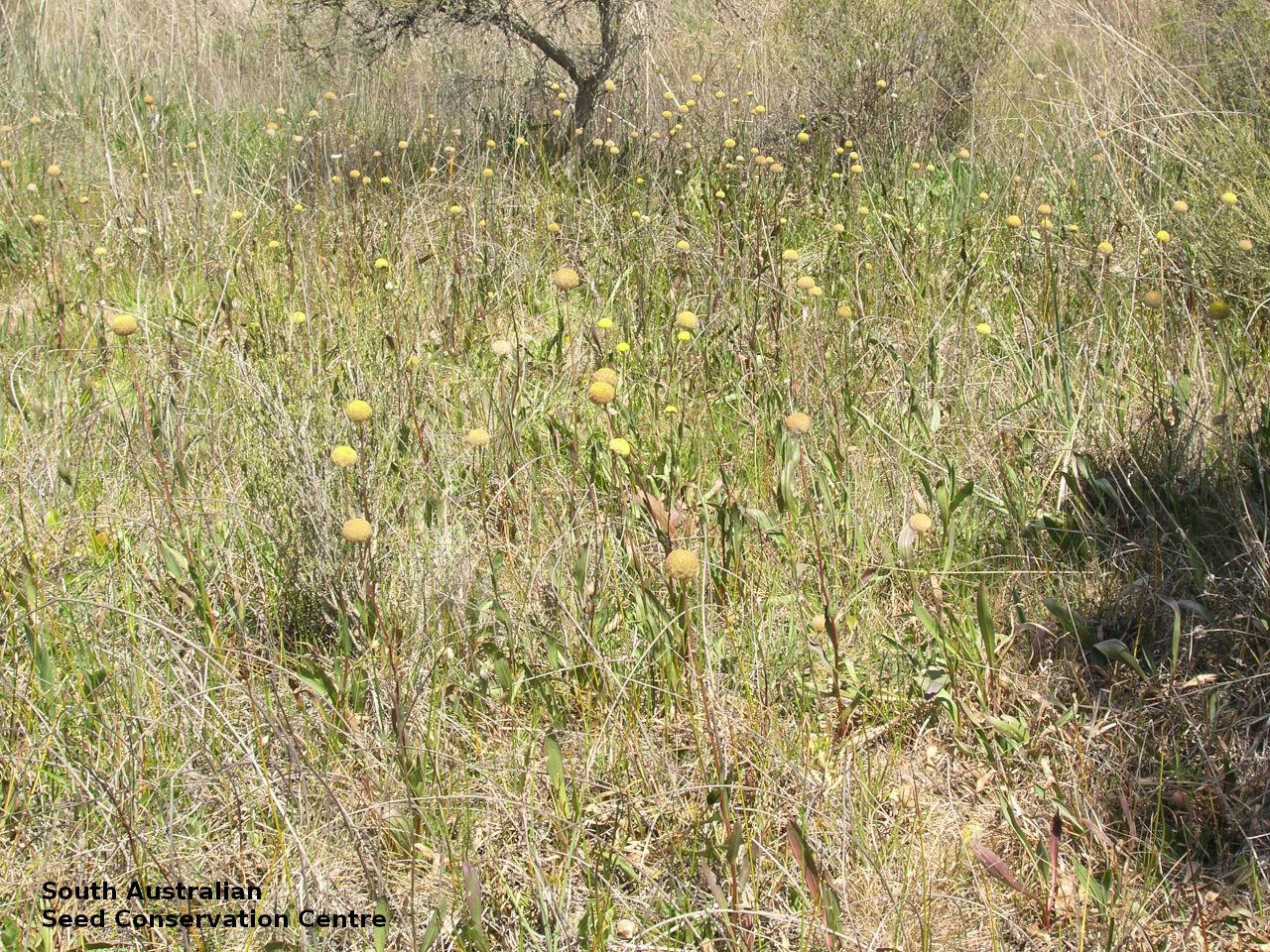
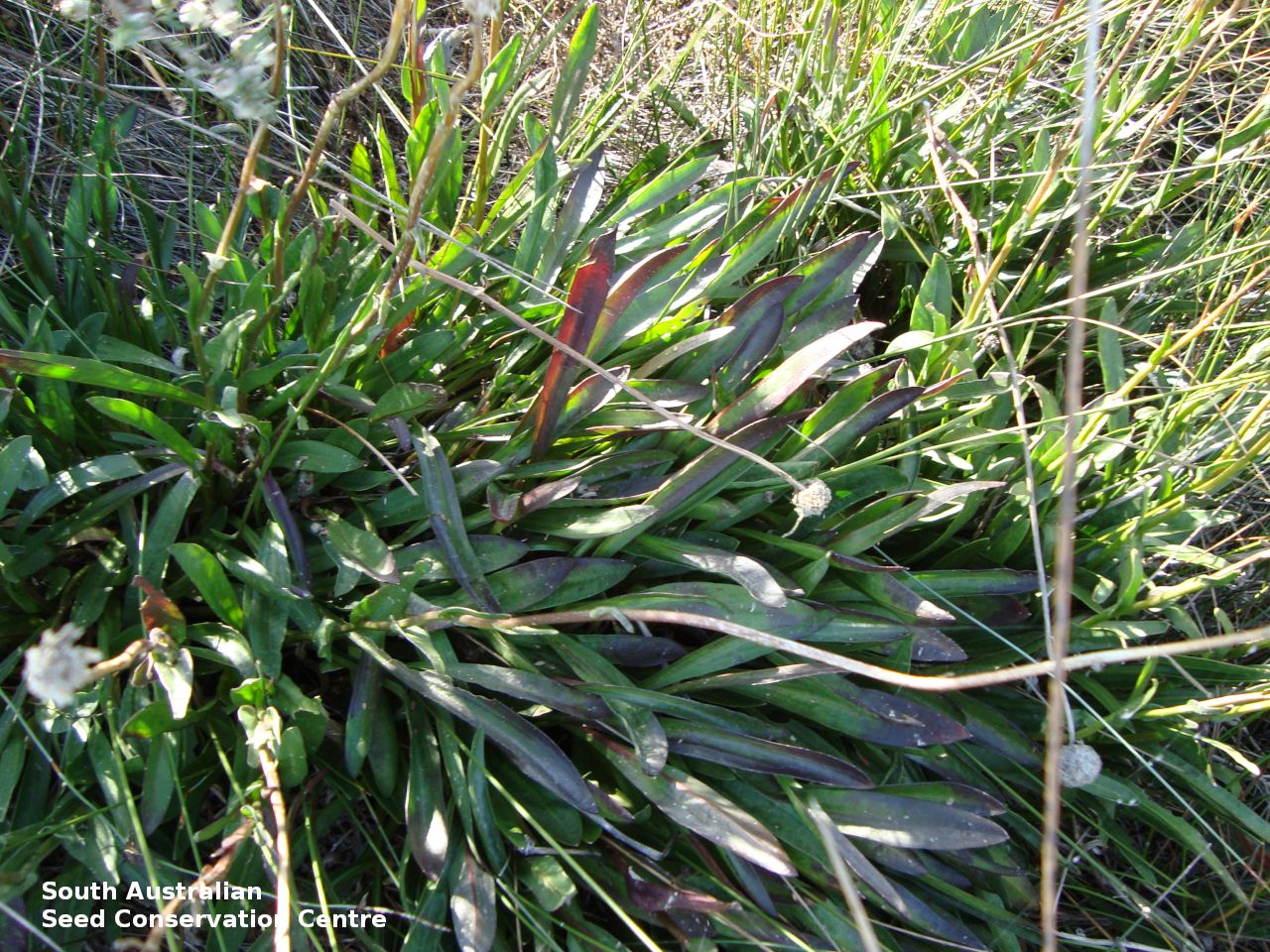
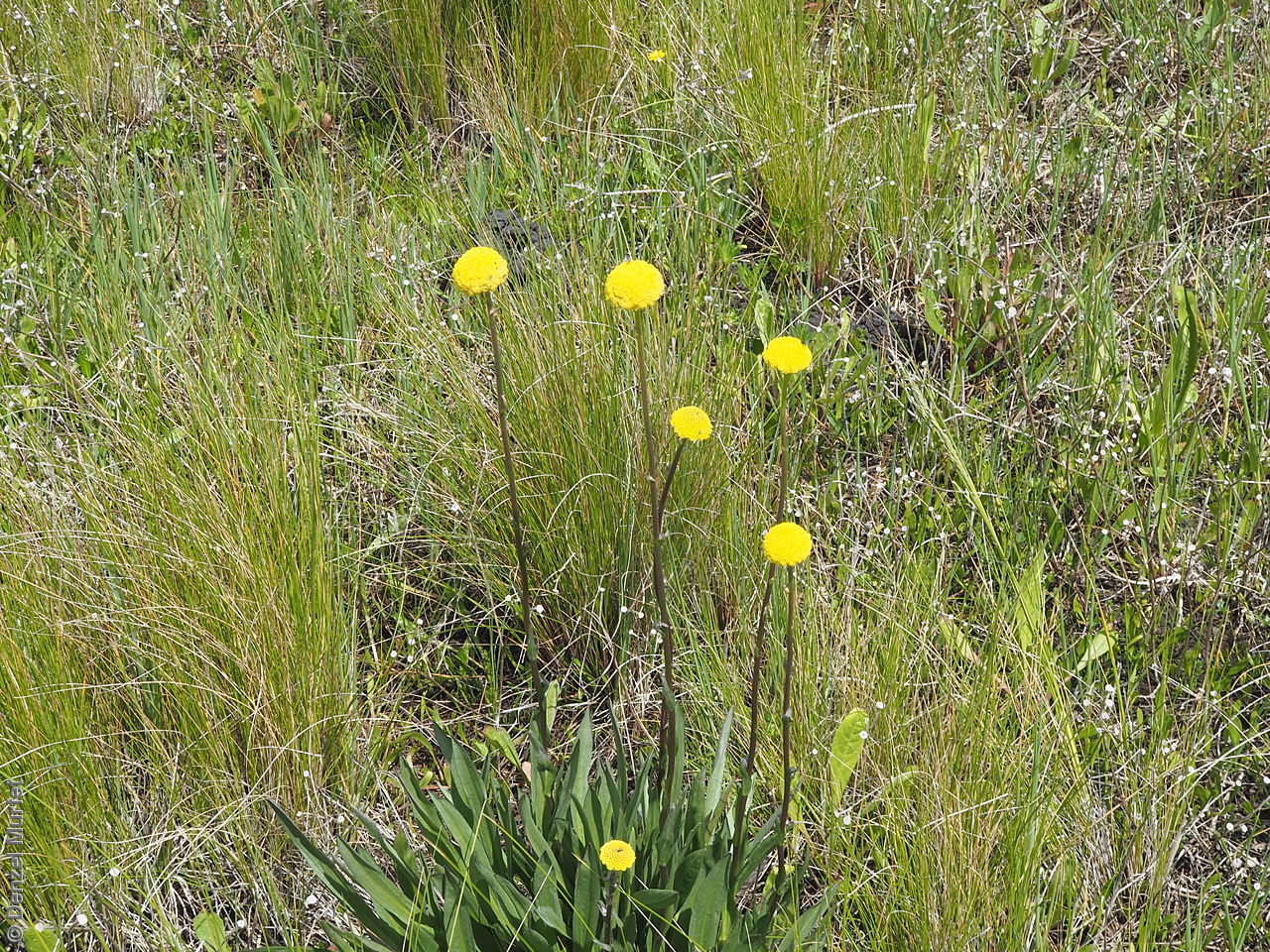
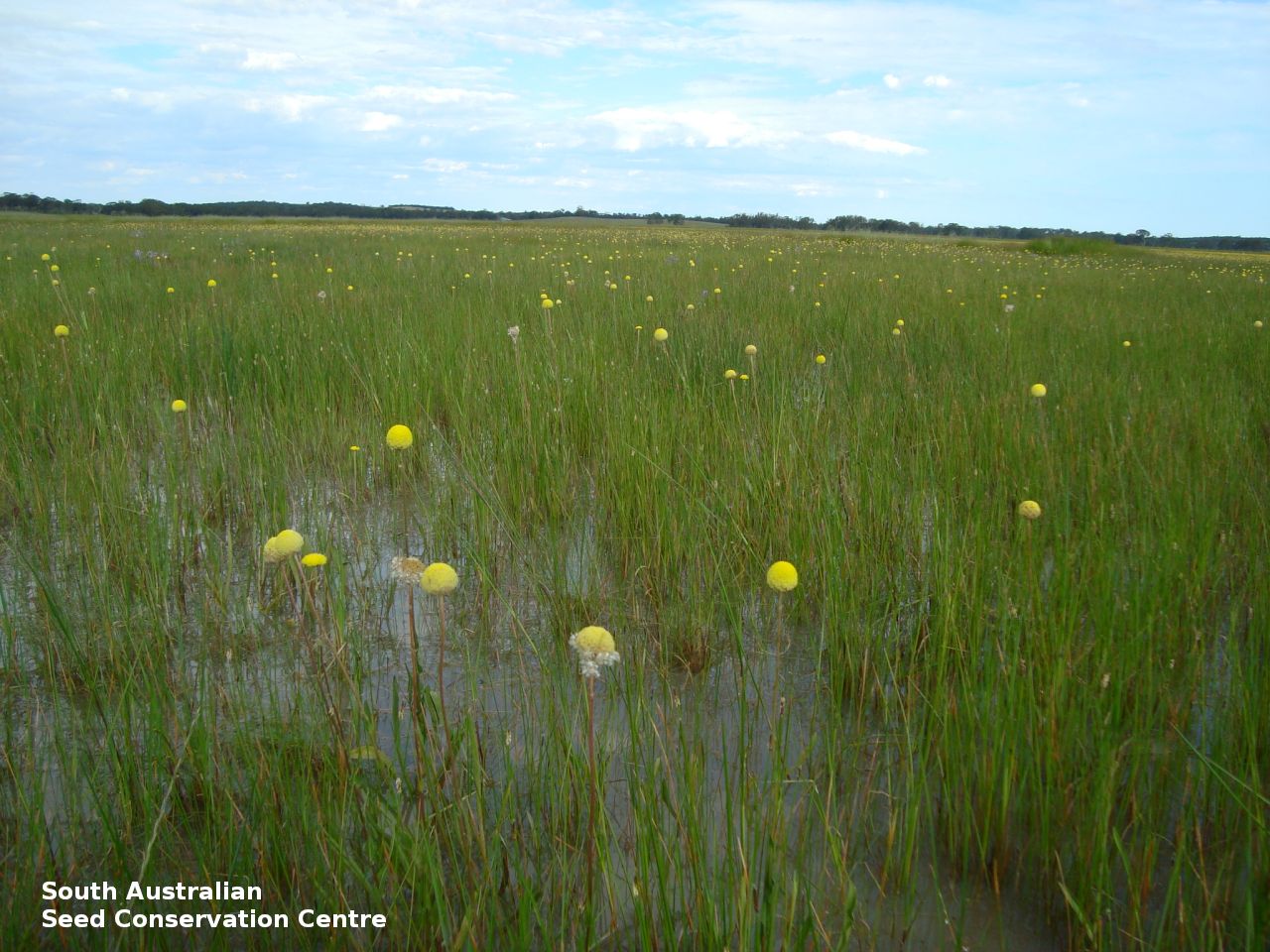
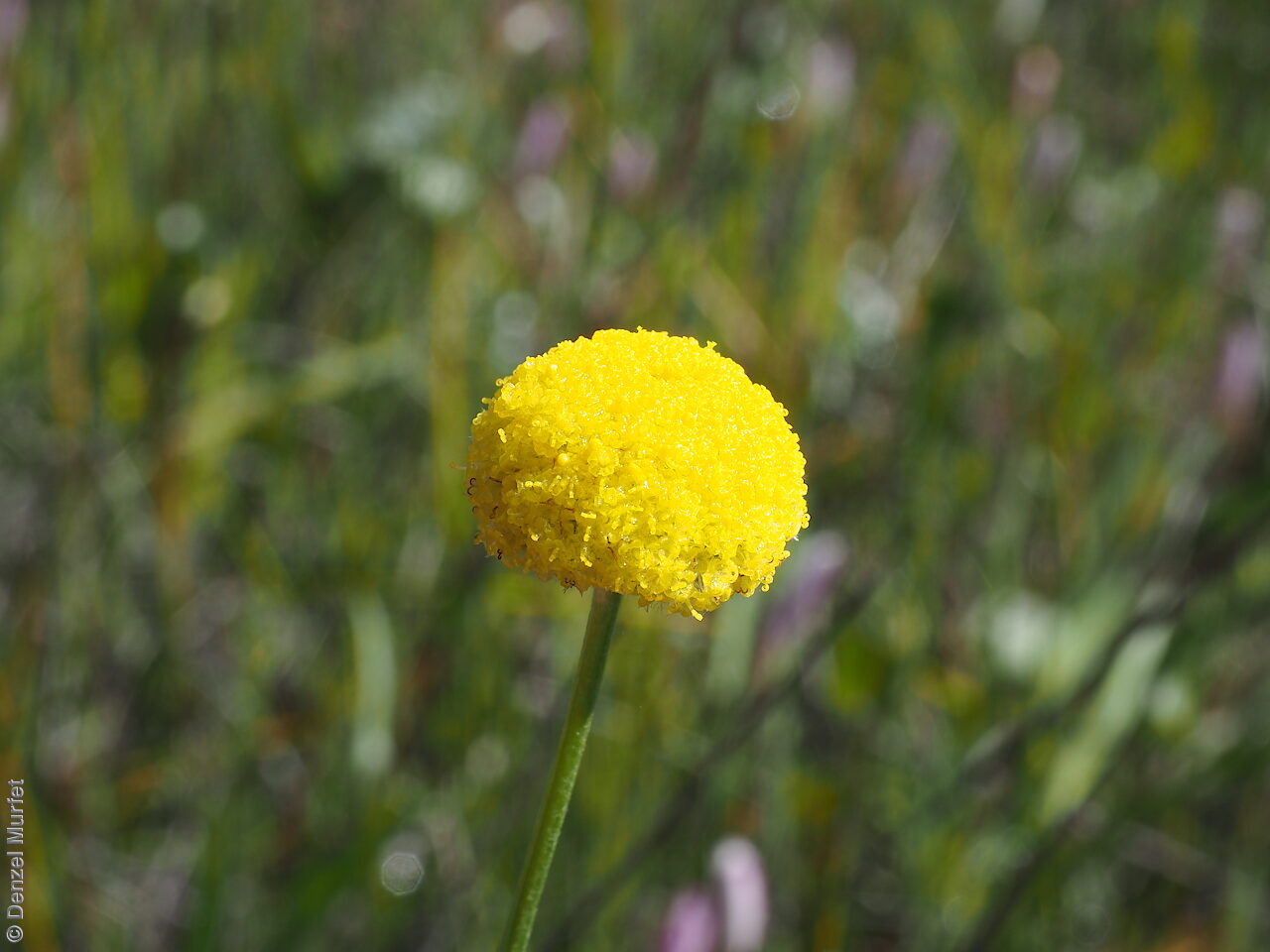
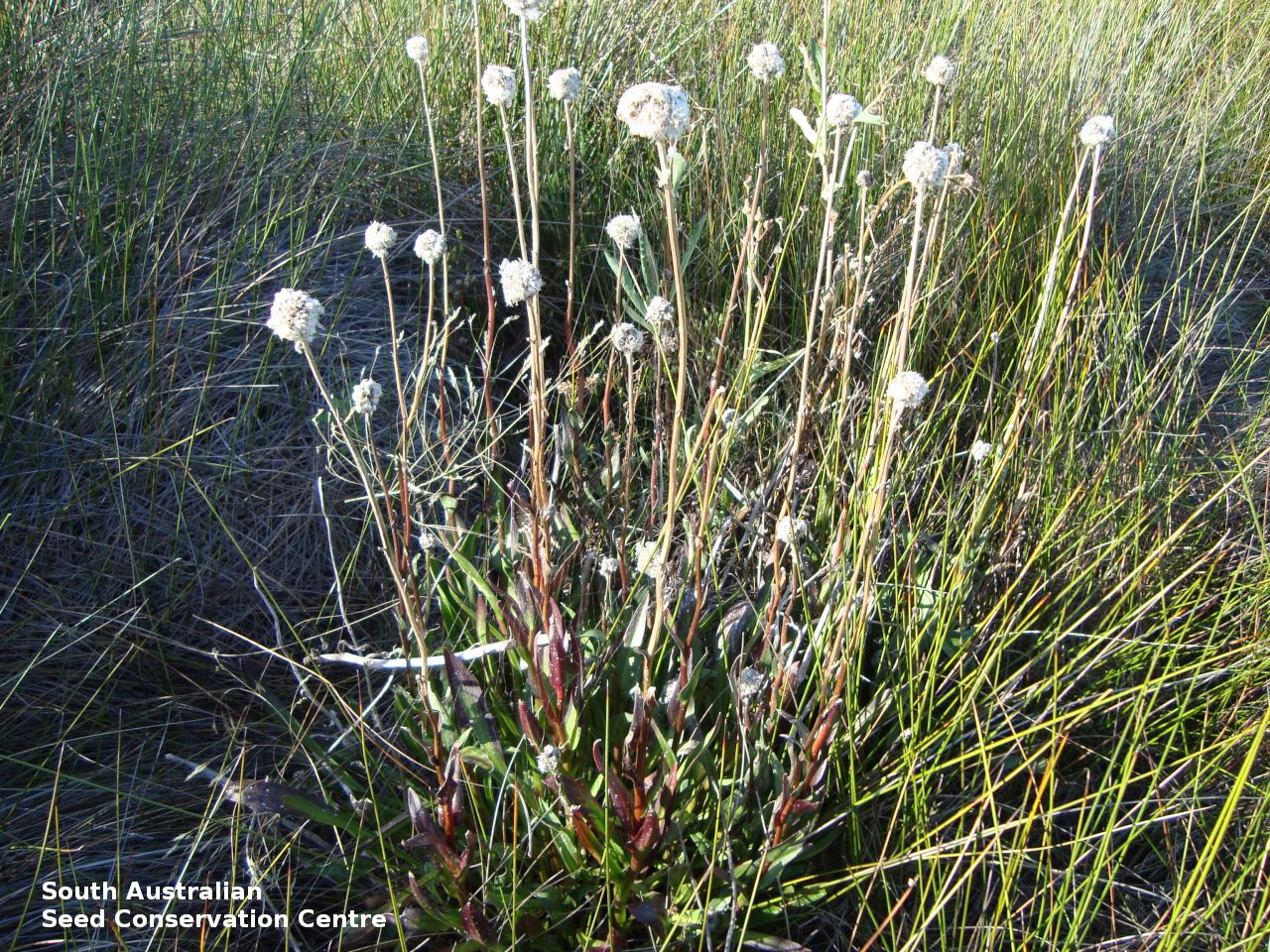
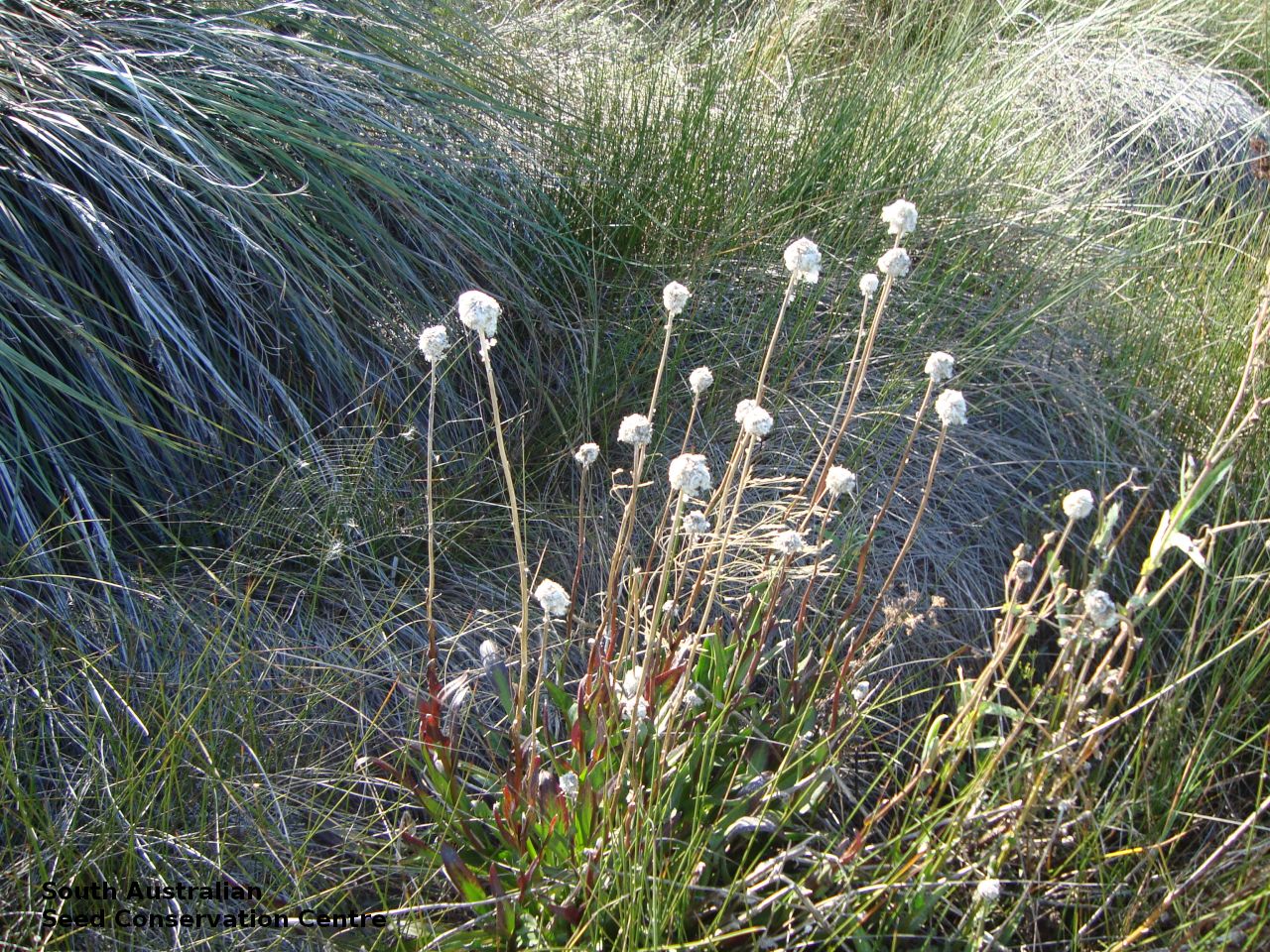
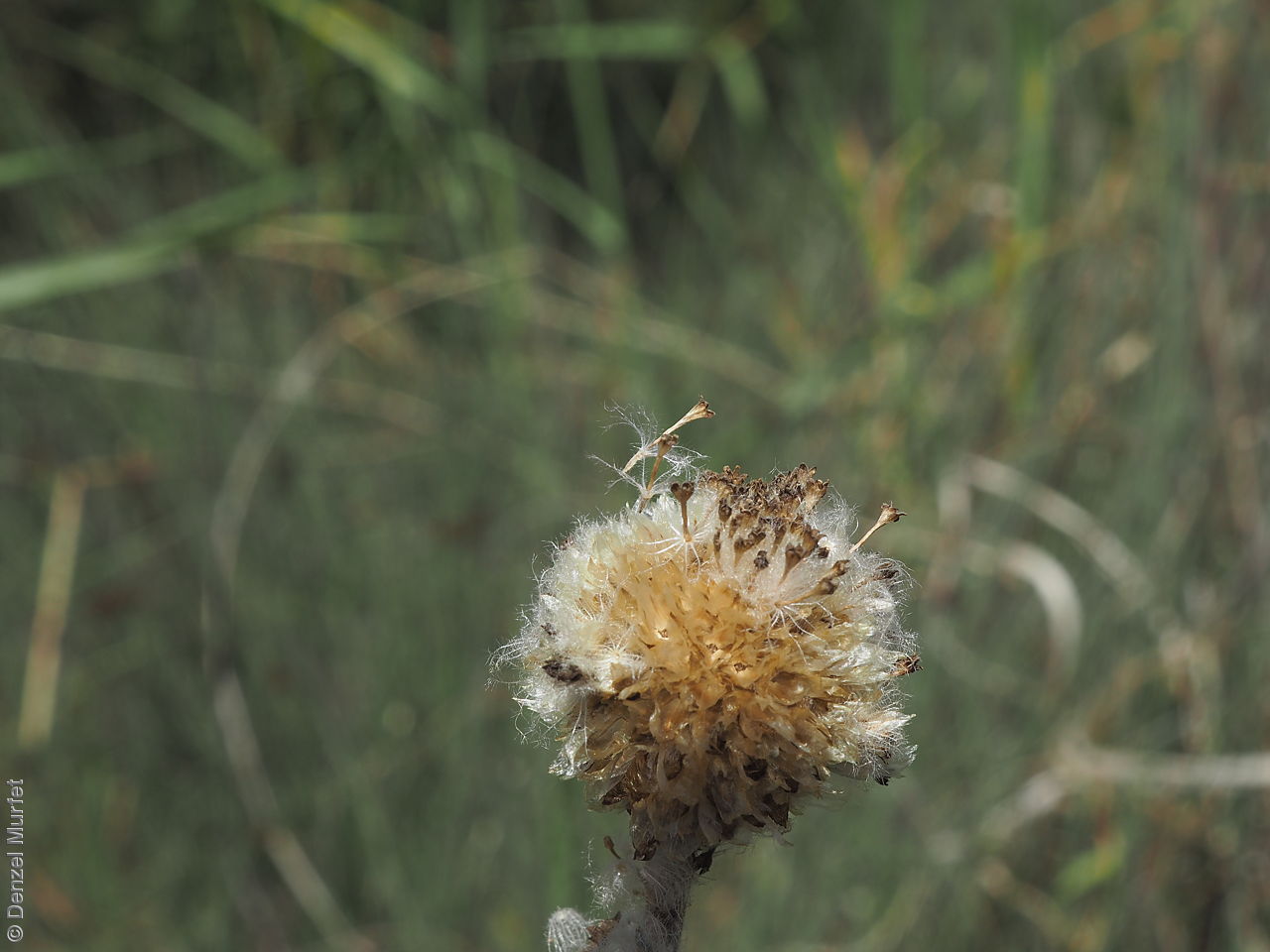
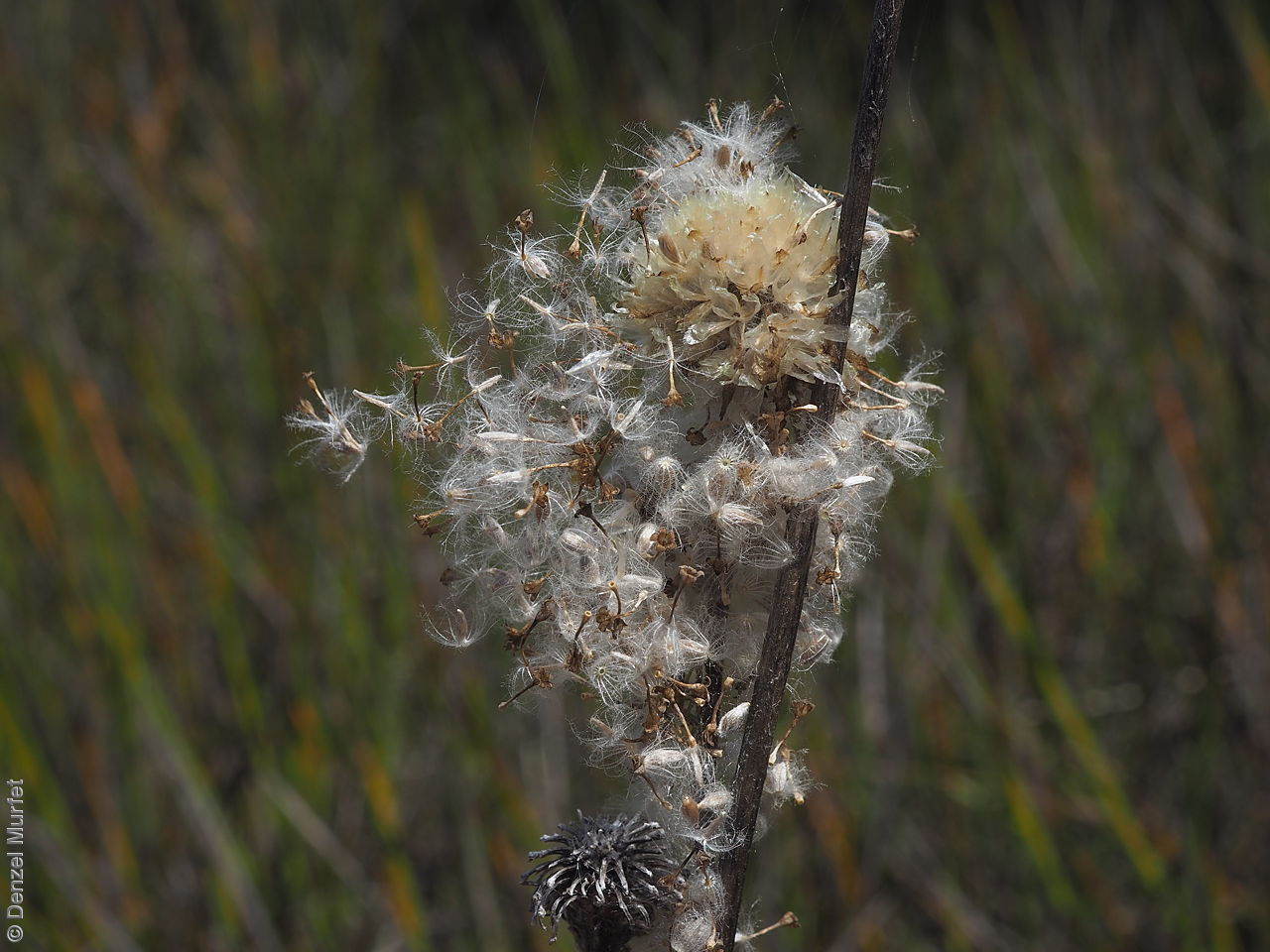
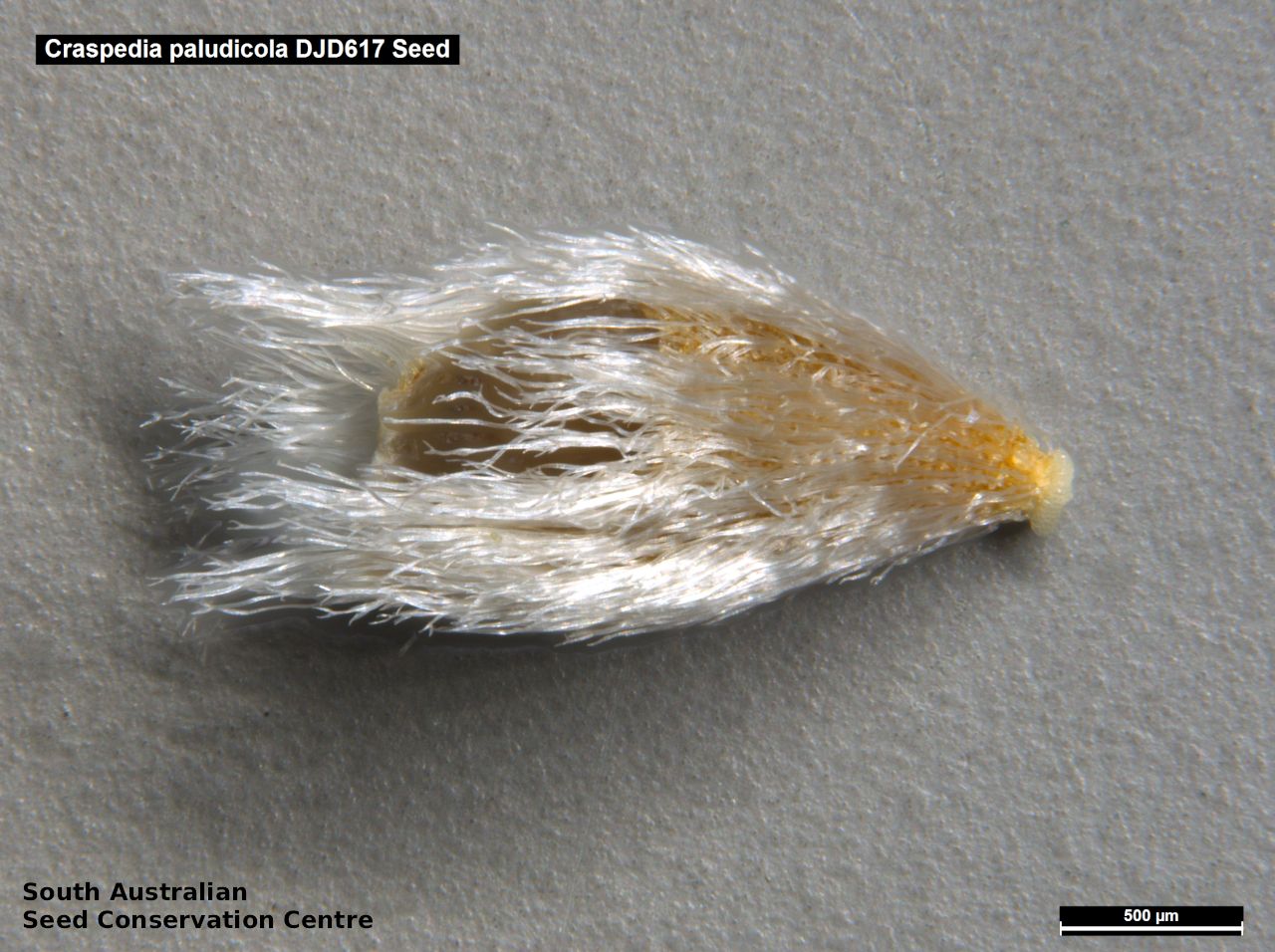
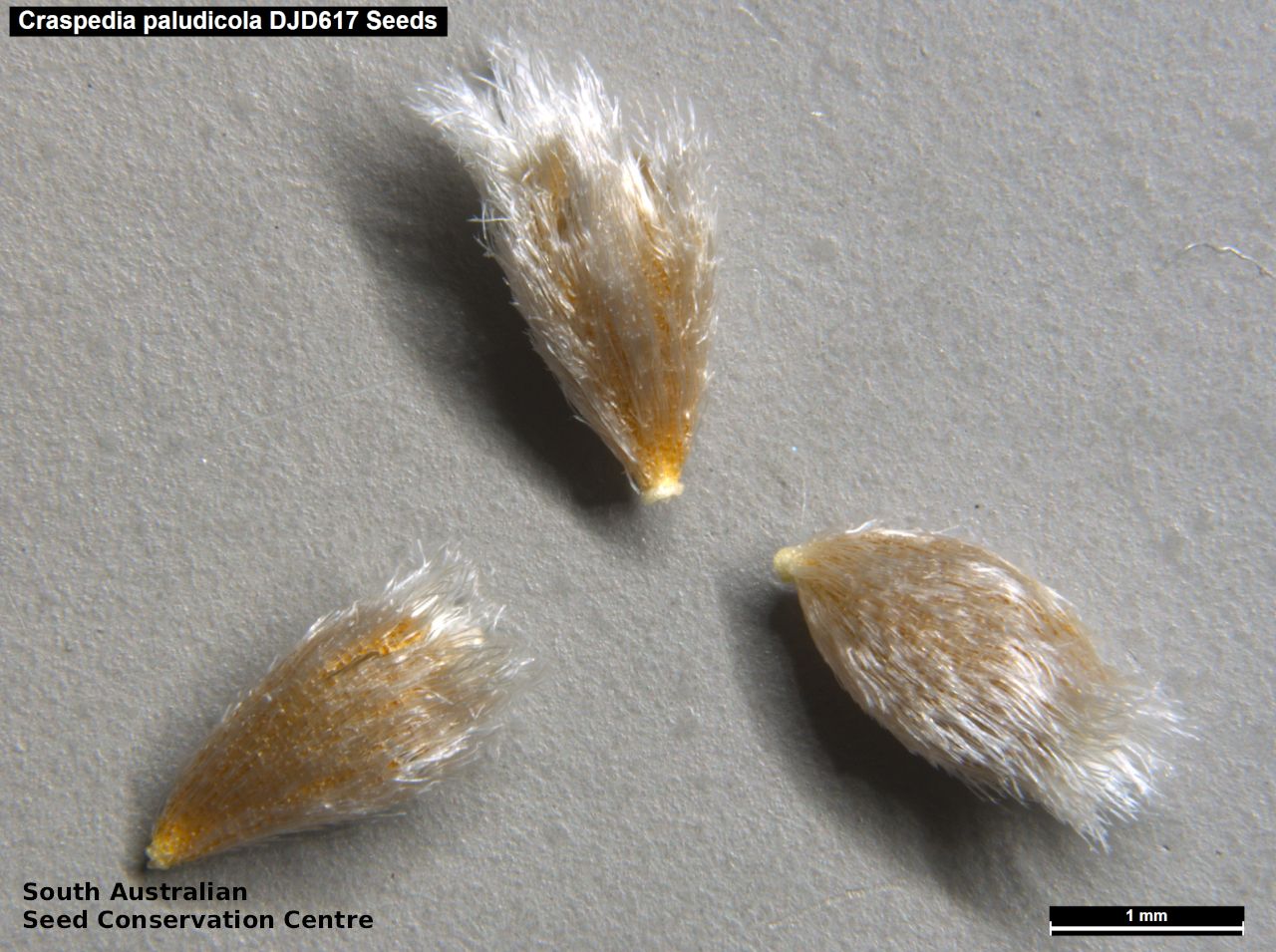
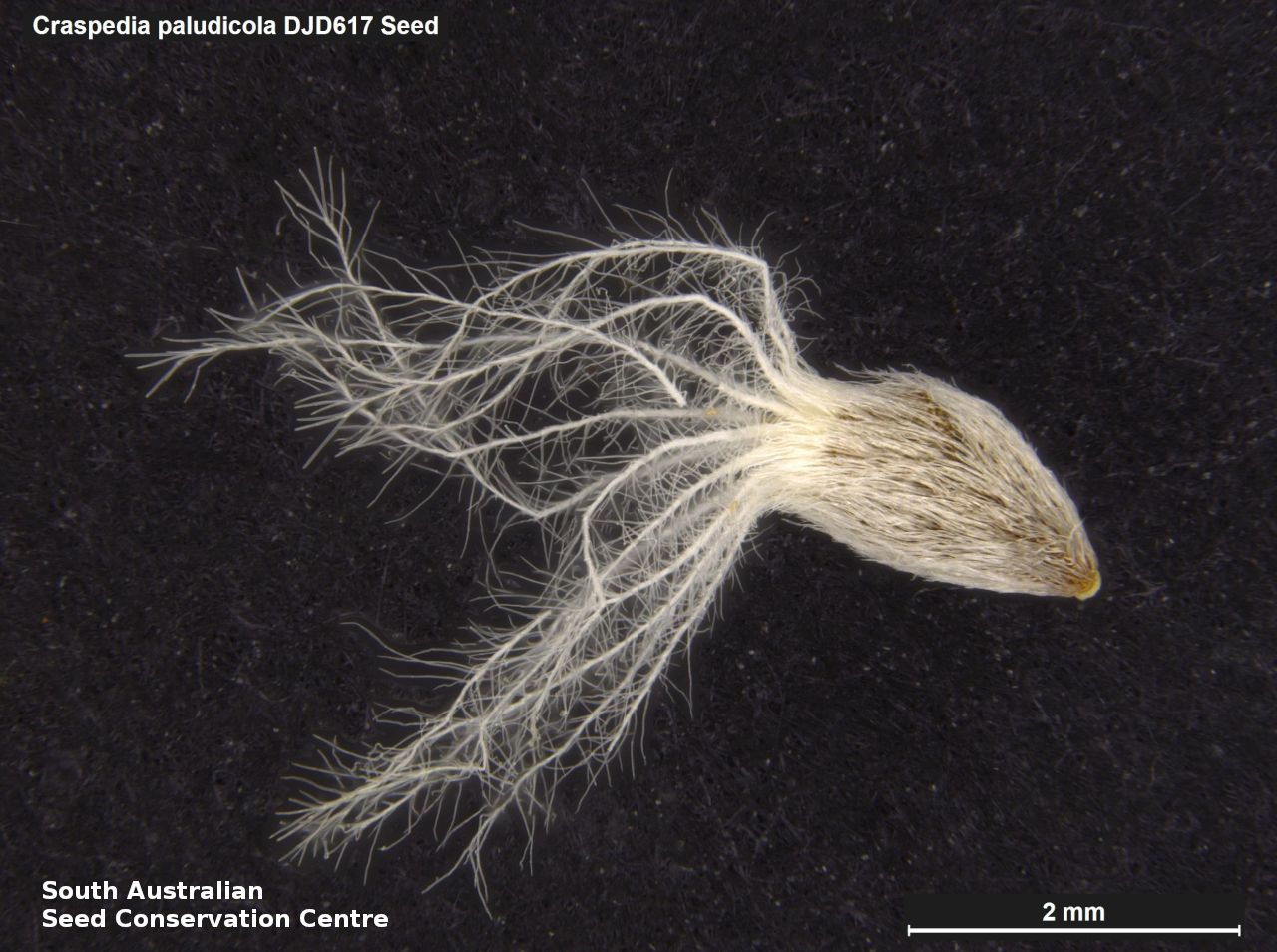


Botanical art
Prior names
Craspedia glauca, partly
Common names
Swamp Buttons
Etymology
Craspedia from the Greek 'kraspedon' meaning a hem or border, referring to the woolly fringes on the leaves of the type species or the feathery pappus of some species. Paludicola from the Latin 'paludosus' meaning marshy and 'cola' meaning dwelling, alluding to the species' usual habitat in swampy sites.
Distribution and status
Found only in the lower South-east in South Australia growing in swampy areas and drainage lines; usually in heavy clayey soils, often partially submerged for at least some of the growing season. Also found in New South Wales, Victoria and Tasmania. Native. Rare in South Australia. Common in the other States.
Herbarium region: South Eastern
AVH map: SA distribution map (external link)
Plant description
Robust hairy herb with thick roots; 1 to several flowering scapes to 75 cm high; leaves basal and cauline, narrow-oblanceolate to 40cm long and 20 mm wide, obtuse; usually deep red and attenuate at the base and broadly stem-clasping with 1 to several prominent longitudinal veins; glabrous or with few scattered finely woolly or multi-septate hairs (sometimes denser on margins or midrib); old leaf at base retained. Flower heads solitary, globular shape with bright yellow dense flowers. Flowering in spring and summer. Fruits are yellow-white, globular daisy-head. Seeds are brown ovoid seed to 2 mm long and 1 mm wide, covered in white hairs. Seed embryo type is spatulate fully developed.
Seed collection and propagation
Collect seeds between October and February. Collect heads that are drying off, fluffy and turning yellow-white with hard brown seeds. Pick off whole heads or pluck off mature seeds with your fingers. Place the heads in a tray and leave to dry for one to two weeks. Then rub the heads gently by hand to dislodge the seeds. Use a sieve to separate the unwanted material. Store the seeds with a desiccant such as dried silica beads or dry rice, in an air tight container in a cool and dry place. From one collection, the seed viability was average, at 55%. Seeds are non-dormant, viable seed should germinate readily.
| Location | No. of seeds (weight grams) | Number of plants | Date collected | Collection number Collection location | Date stored | % Viability | Storage temperature |
|---|---|---|---|---|---|---|---|
| BGA MSB | 15,000 (21.16 g) 9,000 (12.69 g) | 70 | 23-Oct-2006 | DJD617 South Eastern | 1-Aug-2007 | 55% | +5°C, -18°C |
| BGA | 4,600 (3.35 g) | 100+ | 14-Nov-2017 | DJD3683 South Eastern | 30-Jun-2018 | 75% | -18°C |
Number of plants: This is the number of plants from which the seeds were collected.
Collection location: The Herbarium of South Australia's region name.
% Viability: Percentage of filled healthy seeds determined by a cut test or x-ray.